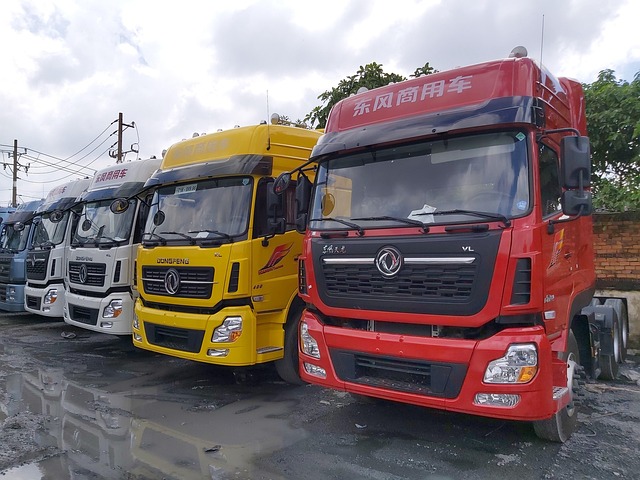Looking to register your car in California? Navigating the process can seem daunting, but it’s a crucial step for every new vehicle owner. This guide breaks down the California car registration process, from understanding the requirements to gathering essential documents and navigating the role of DMV VIN verification. By following these steps, you’ll ensure a smooth transition into California’s automotive landscape.
- Understanding the California Car Registration Process
- Gathering Required Documents for DMV Visit
- The Role of VIN Verification in California Registration
- Step-by-Step Guide to Registering Your Vehicle
- Post-Registration Tasks and Important Considerations
Understanding the California Car Registration Process

In California, car registration is a vital process that ensures road safety and vehicle ownership rights. Understanding the state’s procedures is crucial for a smooth experience. The process begins with several key steps, including gathering necessary documents and undergoing a DMV (Department of Motor Vehicles) vin verification. This involves confirming your vehicle’s unique identification number (VIN), which is a critical component in establishing ownership and ensuring the car’s history is accurately checked.
A mobile vin verifier can be particularly useful for this step, as it allows you to complete the inspection conveniently, whether at home or on the go. The VIN inspection process verifies key details about your vehicle, such as its make, model, year, and any reported accidents or outstanding issues. By having this information readily available, you’re well-prepared to navigate California’s car registration requirements efficiently.
Gathering Required Documents for DMV Visit

Before visiting the DMV to register your car in California, ensure you have all the necessary documents ready. This process typically involves gathering proof of ownership, vehicle identification number (VIN) verification, and valid forms of identification for all drivers. One crucial step is to obtain a mobile VIN inspection or verification to confirm the vehicle’s history and ensure it meets state standards.
Having these documents readily available will streamline the registration process. The DMV may also require additional paperwork based on the type of vehicle and your personal situation, so it’s good to be prepared with any relevant information. Additionally, always double-check the requirements on the California DMV website to avoid any surprises during your visit.
The Role of VIN Verification in California Registration

In California, registering a car involves a meticulous process designed to ensure vehicle safety and legitimacy. A crucial step in this process is the DMV VIN verification, which checks that your vehicle’s unique Vehicle Identification Number (VIN) matches the details on record and that it meets all necessary safety standards. This step is critical as it helps prevent fraud and ensures only legitimate, safe vehicles are on California’s roads.
The mobile vin verification or mobile vin inspection service has become increasingly popular, offering convenience to California residents. A mobile vin verifier can perform this check at your location, streamlining the registration process even further. This option is particularly useful for those with busy schedules, providing a fast and efficient alternative to traditional DMV visits.
Step-by-Step Guide to Registering Your Vehicle

Registering a car in California involves several straightforward steps, starting with verifying your vehicle’s identification number (VIN) through the DMV. Here’s a step-by-step guide to help you navigate the process efficiently:
1. DMV VIN Verification: The first step is to ensure your vehicle’s VIN is valid and accurate. You can perform this essential vin inspection or mobile vin verification by visiting the California DMV website, where they offer tools for checking VINs. Alternatively, many licensed auto repair shops and mobile services provide mobile vin inspection services right at your location, making it convenient.
2. Gather Required Documents: After confirming your VIN, you’ll need to gather essential documents, such as proof of ownership (a title or bill of sale), current registration, insurance paperwork, and a valid driver’s license. If you’re registering a new vehicle, you might also require a manufacturer’s certificate of origin (MCO).
Post-Registration Tasks and Important Considerations

After successfully registering your vehicle with the DMV in California, there are several crucial post-registration tasks to complete to ensure a smooth ownership experience. One critical step is to obtain a Vehicle Identification Number (VIN) verification. This process involves checking the VIN accuracy and matching it with the vehicle’s make, model, and year. You can perform this as a mobile vin inspection or take your car to a designated DMV location for a vin inspection. It’s an essential step to prevent fraud and ensure you have the correct vehicle documentation.
Additionally, keep your registration documents in a secure place and update your address with the DMV if needed. Regular maintenance checks and ensuring your insurance is up-to-date are also vital considerations. Remember that timely renewal of registration and compliance with California’s vehicle emission standards are mandatory to avoid penalties. These simple yet important tasks will help you maintain legal compliance and keep your car in top condition.
Registering a car in California involves understanding the state’s process, gathering essential documents, and ensuring proper VIN verification. By following these steps outlined in the article, from preparing required paperwork to post-registration tasks, you can navigate the California DMV procedures efficiently. Remember that accurate information and timely completion of each step are crucial for a smooth registration experience.
